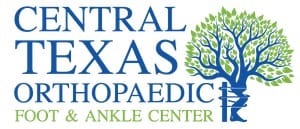Common Diagnoses:
Peroneal Tendinitis
Peroneal Tendinitis Overview
Peroneal tendonitis is a common cause of pain around the back and outside of the foot due to injury or damage to the tendons.
The peroneal tendons are strong, cord-like structures that link the peroneal muscles of the calf to the bones of the foot. Tendonitis occurs when microtears cause tendon damage and inflammation, leading to pain and difficulty walking.
The pain is usually worse with activity, comes on slowly, and gets progressively worse over time. The most common cause of peroneal tendonitis is overuse. This injury is common in runners and other athletes whose sports require repetitive motion of the ankle or foot.
Peroneal Tendinitis Symptoms
Peroneal tendonitis can either be acute, meaning that it comes on suddenly; or it can be chronic, meaning that it develops over time.
In both cases, there are some common symptoms:
- pain at the back of the ankle
- pain that worsens during activity and lessens during rest
- pain when turning the foot in or out
- swelling at the back of the ankle
- instability of the ankle when bearing weight
- the area is warm to the touch
Peroneal Tendinitis Diagnosis
To begin with, the doctor will discuss the person’s medical history with them. This will often point to overuse, increased activity, or some other cause of peroneal tendonitis.
It is important to determine that the pain is in the peroneal tendons and not the fibula, as this could indicate a different problem.
Your doctor will use a variety of techniques in a physical exam to look for symptoms, generally by moving the foot and ankle into different positions and applying pressure.
An X-ray, ultrasound, or MRI scan might also be used to rule out any breaks, identify abnormal swelling or scar tissue, and to further help with diagnosis.
Peroneal Tendinitis Treatment
Nonsurgical treatments that are common in cases of peroneal tendonitis include:
Immobilization: Stopping the foot and ankle from moving using a boot or support.
Medication: Anti-inflammatory drugs, such as ibuprofen, can help relieve pain and swelling.
Physical therapy: Ice, heat, and ultrasound therapy can reduce pain and swelling. Once the symptoms improve, introduce exercises that strengthen the muscles and improve balance and motion.
Bracing: Some people may require a brace for use during activities that involve repetitive ankle motion.
Cortisone injection: In rare cases, doctors may recommend this powerful anti-inflammatory medication. However, if cortisone is injected into the peroneal tendons, there is a chance of rupture.
Surgery is rare when treating peroneal tendonitis, and it is only usually considered as a last resort if nonsurgical methods are not helping to reduce pain.
If tissue around the tendons is causing irritation, the surgeon may undertake a procedure called tendon release to remove it.
If a tear has occurred because of overuse of the peroneal tendons, the surgeon will also look to perform tendon repair.
